Ludwig Mies van der Rohe (1886-1969) was a German-American architect and furniture designer and has become world famous for his less is more principle. This modernistic style is characterised by its remarkable open building style which contains much glass and steel.
He grew up in Aachen, where his talent for drawing was already present. In 1905 he went to Berlin, where he studied furniture design. During his career as an architect, his work evolved from a neo-classicistic style, influenced by his teachers such as Bruno Paul and Peter Behrens, towards a modernistic style.
In this first part of a series of two, we will look at his early neo-classicistic works in and around South-West Berlin. The second part will be about his later, modern works in Berlin.
Potsdam-Neubabelsberg
We start the tour in Potsdam-Neubabelsberg, just outside the borders of Berlin.
Haus Riehl 1907 Spitzweggasse 3 Potsdam-Neubabelsberg
In 1907, when Mies van der Rohe was only 21 years old, he got his first independent job: philosopher Alois Riehl asked him to design a new cottage house, nowadays known as Haus Riehl. After the war the house was used during the GDR years as the Konrad Wolf highschool for film and television (HFF). The house is currently in private use.
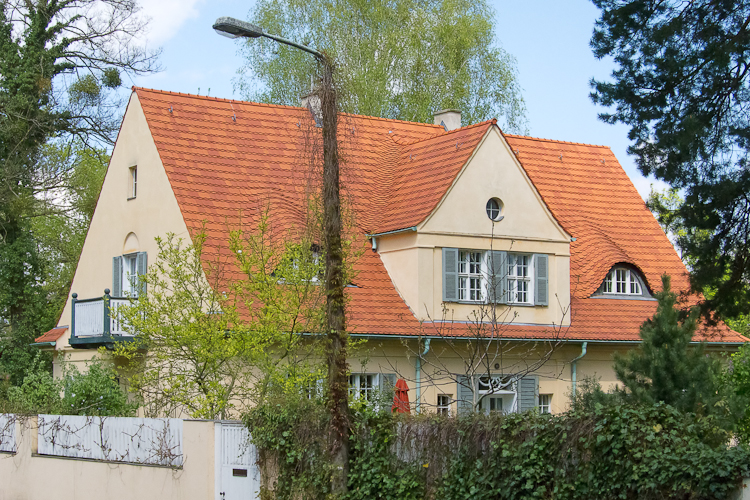
Haus Riehl
Villa Urbig 1917 Virchowstrasse 23 Potsdam-Neubabelsberg
Villa Urbig, also called Haus Seefried or the Churchill Villa, is located in the same area. It was built for the rich banker Franz Urbig. The house’s typical neo-classicistic Schinkel style was one of Mies van der Rohe’s favourite styles. As after the war the garden was unfortunately located in the restricted area along the border between the GDR and West Berlin, the Urbig family could not return to their home. During the Potsdam Conference in 1945, it was the residence of the UK prime minister Winston Churchill. Afterwards the GDR academy for political and law studies situated in the building. It is currently owned and inhabited by a business man.
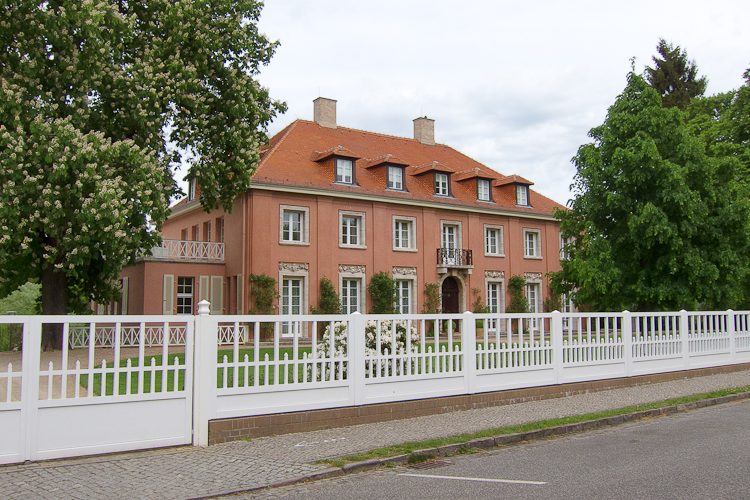
Haus Urbig
Villa Mosler 1926 Karl-Marx-Strasse 28-29 Potsdam-Neubabelsberg
Villa Mosler is also located in this villa area, next to house where Stalin stayed during the Potsdam Conference just after the war. It was built for the Jewish banker Georg Mosler. He left his house and Germany in 1933, after which the house was confiscated by the German Reich. During the GDR era it held a childrens hospital. Currently it is owned by the same inhabitant, and Mies van der Rohe fan, of Villa Urbig.
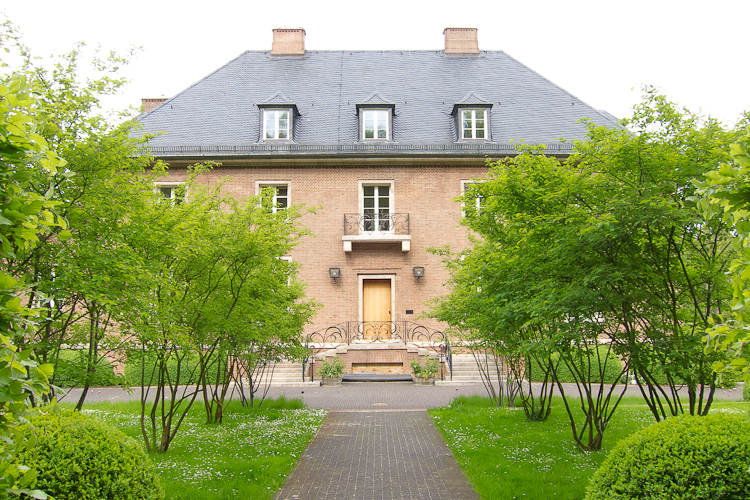
Haus Mosler
Berlin-Nikolassee
Going North, you’ll find Haus Eichstädt at Dreilindenstraße 30 in Berlin-Nikolassee. It was built in 1921-1923. Through the trees you can see the classic Schinkel style of the house, although it was built in the early 20s when Mies van der Rohe already developed a more modern style. Today the house is in private use.
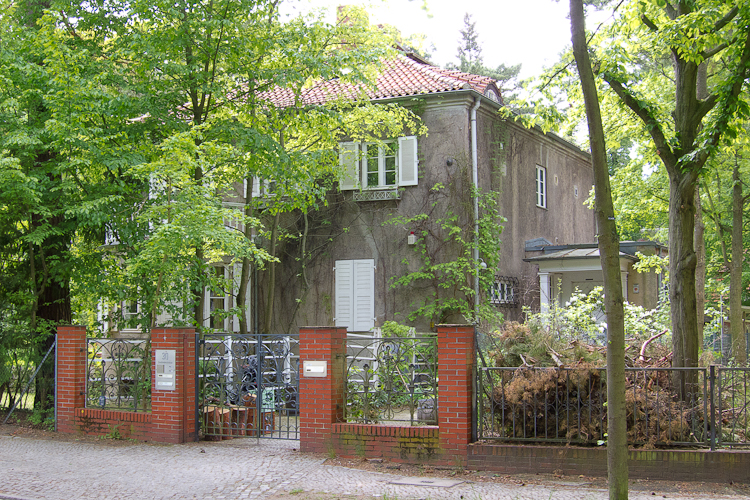
Haus Eichstädt
Berlin-Zehlendorf
Further North, at Quermatenweg 2-4 in the Berlin Zehlendorf area, two neo-classicistic buildings from the early years of Mies van der Rohe’s career, can be found: Haus Perls/Fuchs, built in 1911, and Haus Werner, built in 1913.
Haus Perls/Fuchs was built for the art collector and lawyer Hugo Perls, in a typical Schinkel style. Mies van der Rohe also designed the new garden hall in 1928, for the new owner Eduard Fuchs, which already resembles Mies van der Rohe’s modernistic style.
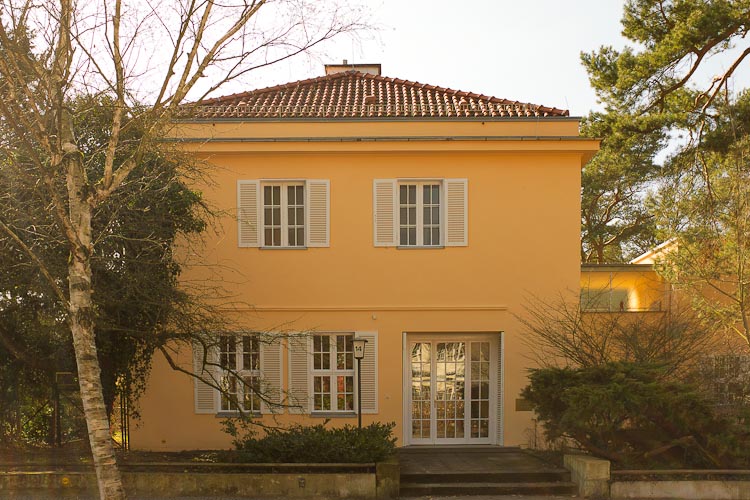
Haus Perls/Fuchs
Haus Werner was designed as a Prussian cottage house. The garden was designed by Mies van der Rohe as well and is the only garden which has been preserved in Germany. Today both houses belong to the Parzivalschule.
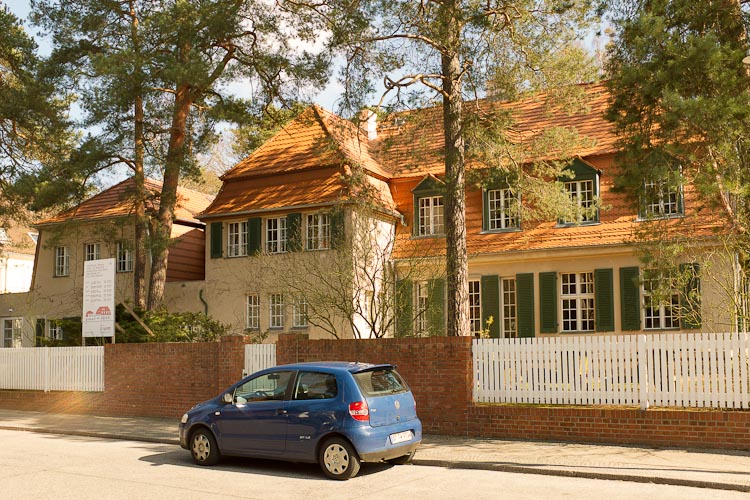
Haus Werner
Other early designs by Mies van der Rohe in Berlin are destroyed, such as Haus Kempner and Haus Feldmann both built in 1921–1923, as well as the Revolutionsdenkmal, a memorial dedicated to Karl Liebknecht and Rosa Luxemburg at Zentralfriedhof Friedrichsfelde in Berlin-Lichtenberg from 1926.
In part II we’ll focus on his modernistic works in other Berlin areas.
Public Transport
Potsdam-Neubabelsberg: S7 Griebnitzsee
Berlin-Nikolassee: S1 S7 Wannsee
Berlin-Zehlendorf: S1 Mexicoplatz U3 Krumme Lanke
very interesting history. was expecting something modern not schinkel style. berlin is an amazing place.
oh yes it is! glad you found the article about his later, modern designs as well.